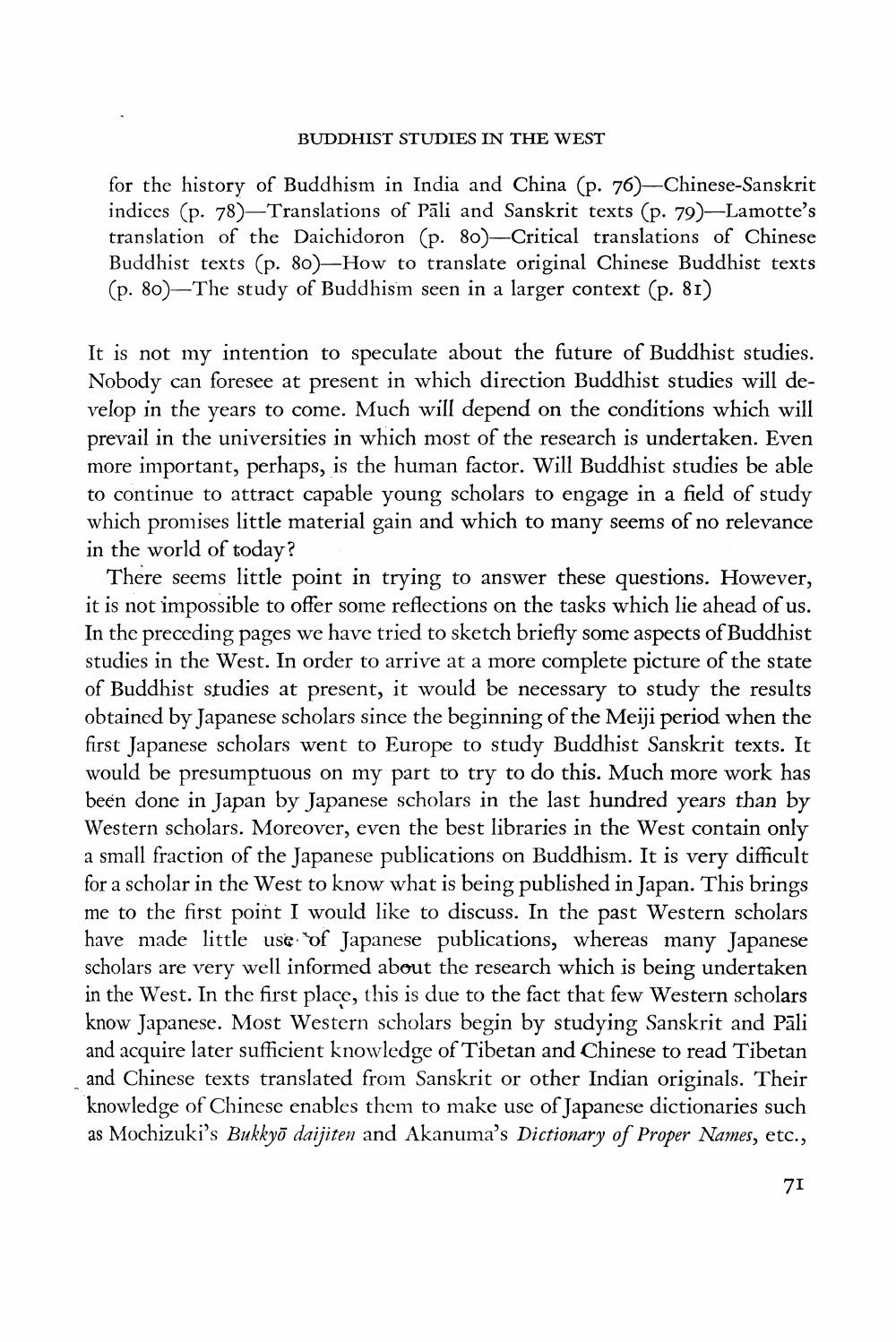________________
BUDDHIST STUDIES IN THE WEST
for the history of Buddhism in India and China (p. 76)-Chinese-Sanskrit indices (p. 78)-Translations of Pāli and Sanskrit texts (p. 79)-Lamotte's translation of the Daichidoron (p. 80)-Critical translations of Chinese Buddhist texts (p. 80)-How to translate original Chinese Buddhist texts (p. 80) The study of Buddhism seen in a larger context (p. 81)
It is not my intention to speculate about the future of Buddhist studies. Nobody can foresee at present in which direction Buddhist studies will develop in the years to come. Much will depend on the conditions which will prevail in the universities in which most of the research is undertaken. Even more important, perhaps, is the human factor. Will Buddhist studies be able to continue to attract capable young scholars to engage in a field of study which promises little material gain and which to many seems of no relevance in the world of today?
There seems little point in trying to answer these questions. However, it is not impossible to offer some reflections on the tasks which lie ahead of us. In the preceding pages we have tried to sketch briefly some aspects of Buddhist studies in the West. In order to arrive at a more complete picture of the state of Buddhist studies at present, it would be necessary to study the results obtained by Japanese scholars since the beginning of the Meiji period when the first Japanese scholars went to Europe to study Buddhist Sanskrit texts. It would be presumptuous on my part to try to do this. Much more work has been done in Japan by Japanese scholars in the last hundred years than by Western scholars. Moreover, even the best libraries in the West contain only a small fraction of the Japanese publications on Buddhism. It is very difficult for a scholar in the West to know what is being published in Japan. This brings me to the first point I would like to discuss. In the past Western scholars have made little use of Japanese publications, whereas many Japanese scholars are very well informed about the research which is being undertaken in the West. In the first place, this is due to the fact that few Western scholars know Japanese. Most Western scholars begin by studying Sanskrit and Pāli and acquire later sufficient knowledge of Tibetan and Chinese to read Tibetan and Chinese texts translated from Sanskrit or other Indian originals. Their knowledge of Chinese enables them to make use of Japanese dictionaries such as Mochizuki's Bukkyō daijiten and Akanuma's Dictionary of Proper Names, etc.,
71




